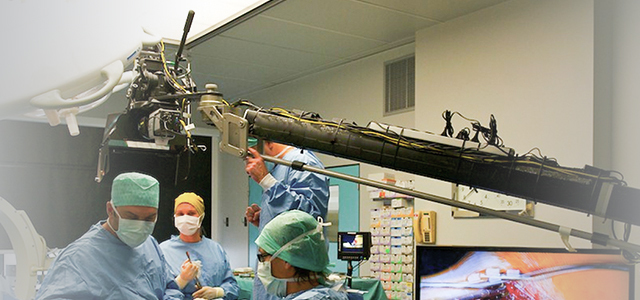Cardiovascular Medicine: TAVR Minimally Invasive "Heart Exchange Valve"
Recently, the team of chief physicians, Li Wensheng, from the Department of Cardiovascular Medicine at Shunde, Southern Medical University, successfully implemented the transcarotid aortic valve replacement surgery again, bringing new hope to heart disease patients. The successful application of this technology marks a further breakthrough in the field of structural heart disease treatment in our hospital, providing patients with more advanced, safe, and minimally invasive surgical options.
Aortic valve stenosis is a serious and rapidly progressing heart valve disease. The incidence rate of aortic valve stenosis in elderly patients is relatively high. The incidence rate of aortic valve stenosis in elderly people over 70 years old is about 5-7%, while the incidence rate of aortic valve stenosis in people over 80 years old is about 10%.
As the "main valve" of the heart, if there is a problem with the aortic valve, the pumping function of the heart will be severely hindered. Mild stenosis will lead to breathing difficulties, chest tightness, and in severe cases, chest pain, heart failure, and sudden syncope. Due to the extremely poor prognosis of severe aortic valve stenosis, once diagnosed, the survival rate within two years is low, and active treatment is very important. If treatment cannot be carried out in a timely and effective manner, patients are prone to developing cardiogenic shock, and the success rate of rescue is very low. Drug therapy has a poor effect on severe aortic valve stenosis. Traditional aortic valve replacement surgery requires sternotomy, which is a highly invasive surgical method for patients.
After years of research and exploration, the team of chief physicians Li Wensheng from the Department of Cardiovascular Medicine, Shunde, Southern Medical University has routinely performed percutaneous aortic valve replacement (TAVR). Compared with traditional aortic valve replacement surgery under thoracotomy and extracorporeal circulation, this surgery avoids the risk factors such as thoracotomy, extracorporeal circulation, and cardiac arrest required for surgical aortic valve replacement surgery, greatly reducing surgical risk and surgical trauma. It is undoubtedly a new hope for patients who cannot tolerate surgical surgery.
Three months ago, Mr. Hong experienced symptoms such as chest tightness and shortness of breath without obvious inducements (which were more pronounced after activity). When he went to the local hospital for treatment, cardiac ultrasound showed severe stenosis of the aortic valve, but the symptoms did not improve significantly after medication treatment. The symptoms of chest tightness and shortness of breath gradually worsened, and the swelling of both lower limbs gradually worsened. Under the introduction of friends and family, Mr. Hong came to the Cardiovascular Department of Shunde Hospital of Southern Medical University for treatment.
On the morning of July 12th, the cardiovascular medicine team conducted a multidisciplinary consultation around Mr. Hong’s condition. After discussion, it was concluded that aortic valve replacement surgery was a "life-saving straw" for Mr. Hong’s heart failure and other symptoms. Due to Mr. Hong’s advanced age, poor renal function, severe weight loss, and severe heart failure symptoms, as well as multiple underlying diseases, large surgical trauma, slow recovery, and high risk factors, Everyone unanimously agrees to undergo transcatheter aortic valve replacement (TAVR). However, due to Mr. Hong’s small size of the common iliac artery (4.8mm on the left and 4.6mm on the right), it is not suitable for the femoral artery approach.
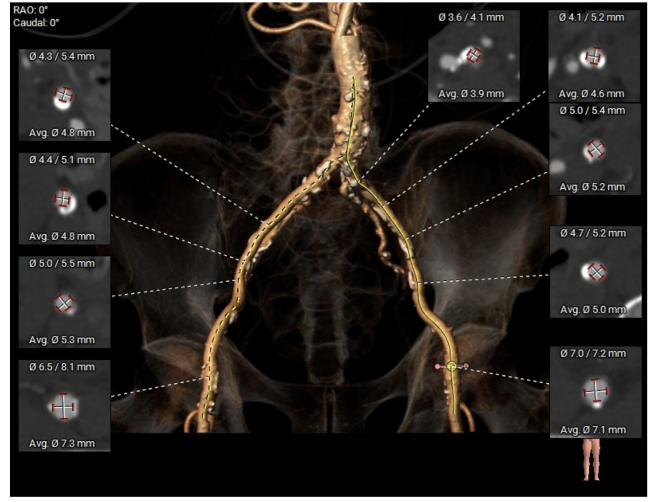
Chief physician Li Wensheng introduced that the commonly used approaches for TAVR include the femoral artery, carotid artery, subclavian artery, and apical approach. The appropriate approach can be selected based on the specific situation of the patient. In comparison, Mr. Hong is more suitable for the carotid artery approach. The carotid artery TAVR approach is short, easy to adjust, and can achieve partial recovery, but it also increases the difficulty of surgery - firstly, the layout of the catheter room, intraoperative positioning, and intraoperative procedures are significantly different from those of the femoral artery; Secondly, due to the long-term impact of prolonged carotid artery occlusion on the patient’s cerebrovascular system, it is necessary to minimize the duration of carotid artery occlusion as much as possible. Therefore, an experienced team of heart valves is an essential condition for the successful implementation of transcarotid TAVR surgery. Based on our previous experience, our team discussed meticulously before the surgery and ultimately determined the surgical implementation plan.
On July 13th, under the guidance of Vice President Hu Yunzhao of Shunde Hospital of Southern Medical University, Chief Physician Li Wensheng from the Department of Cardiology collaborated with departments such as the Structural Heart Disease Team, Catheter Room Team, Ultrasound Team, Vascular Surgery Team, Anesthesiology Team, and ICU Team to ensure the safety of patients’ lives. During the surgery, the guide wire smoothly passed through the aortic valve and entered the left ventricle. After routine balloon pre dilation, a 23mm artificial valve was selected, and the surgery was completed within 23 minutes. Because if the carotid artery is "occupied" for a long time, patients are very prone to brain diseases caused by ischemia and hypoxia. After completing the surgery quickly and effectively, we should open the carotid artery as soon as possible. The postoperative symptoms of chest tightness and shortness of breath in the patient were significantly improved, and on the third day, the patient and their family were very satisfied with the postoperative results.
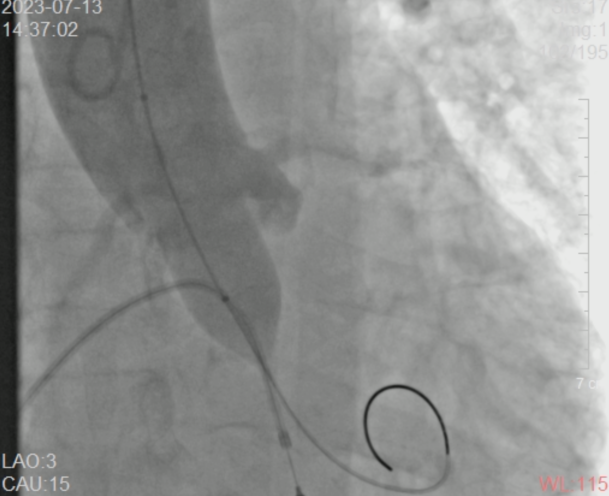
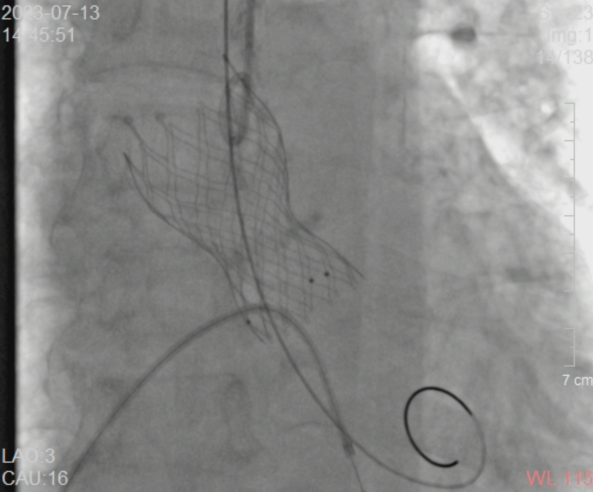
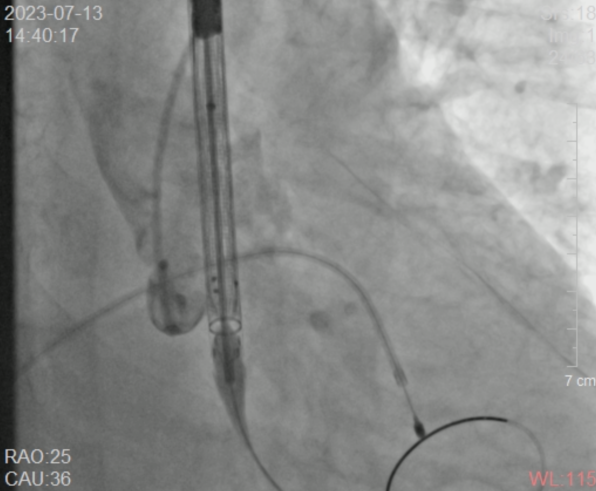
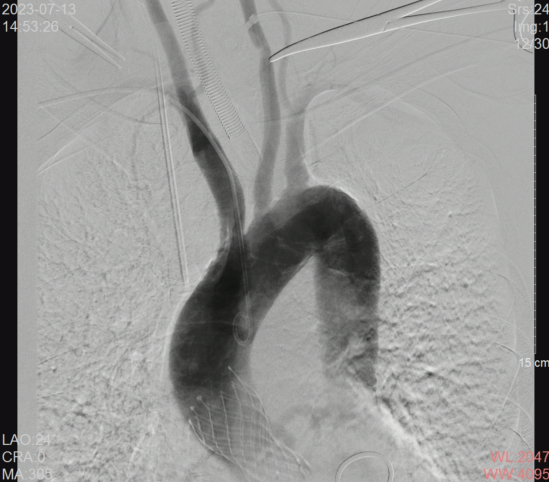
The successful implementation of carotid artery approach aortic valve replacement surgery marks another major breakthrough in the field of structural heart disease at Shunde Hospital of Southern Medical University. Advanced minimally invasive surgery can provide patients with safer, more convenient, and more efficient treatment plans. The success of this transarterial aortic valve replacement surgery not only brings hope to patients, but also makes important contributions to the development of structural heart disease in Shunde District. We believe that with the continuous progress of technology, more and more Shunde patients can solve their "psychological problems" at their doorstep.
This article is reprinted from "Dingxiangyuan"
Surgerycast
Shanghai Headquarter
Address: Room 201, 2121 Hongmei South Road, Minhang District, Shanghai
Tel: 400-888-5088
Email: surgerycast@qtct.com.cn
Beijing Office
Address: room 709, No.8, Qihang international phase III, No.16, Chenguang East Road, Fangshan District, Beijing
Tel: 13331082638( Liu )
Guangzhou Office
Address: No. 15, Longrui street, longguicheng, Taihe Town, Baiyun District, Guangzhou
Tel: 13302302667 ( Ding )





